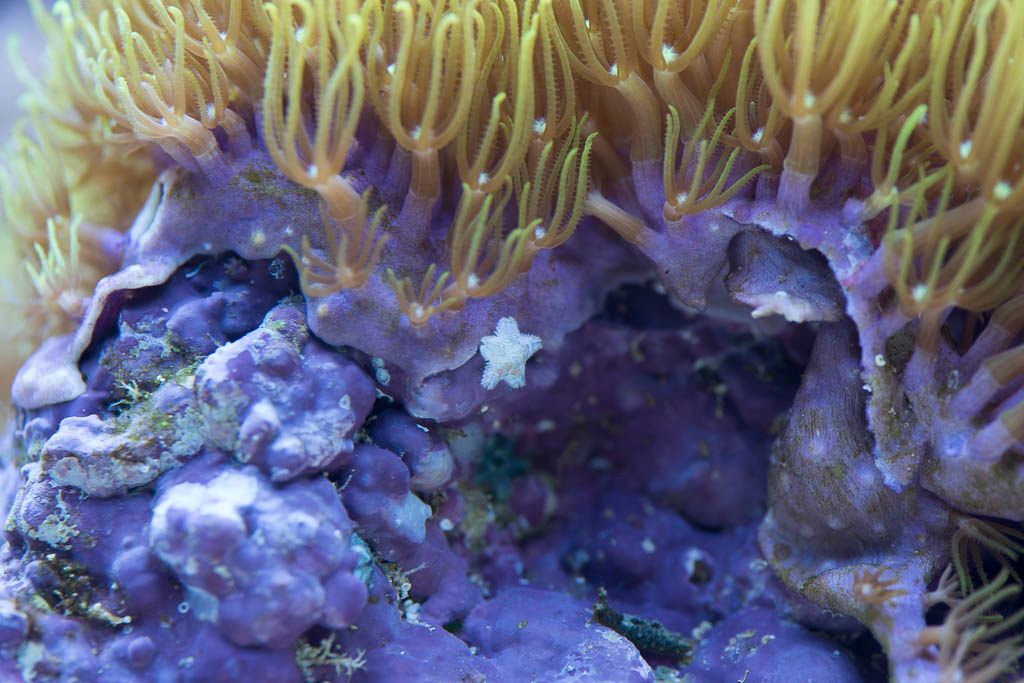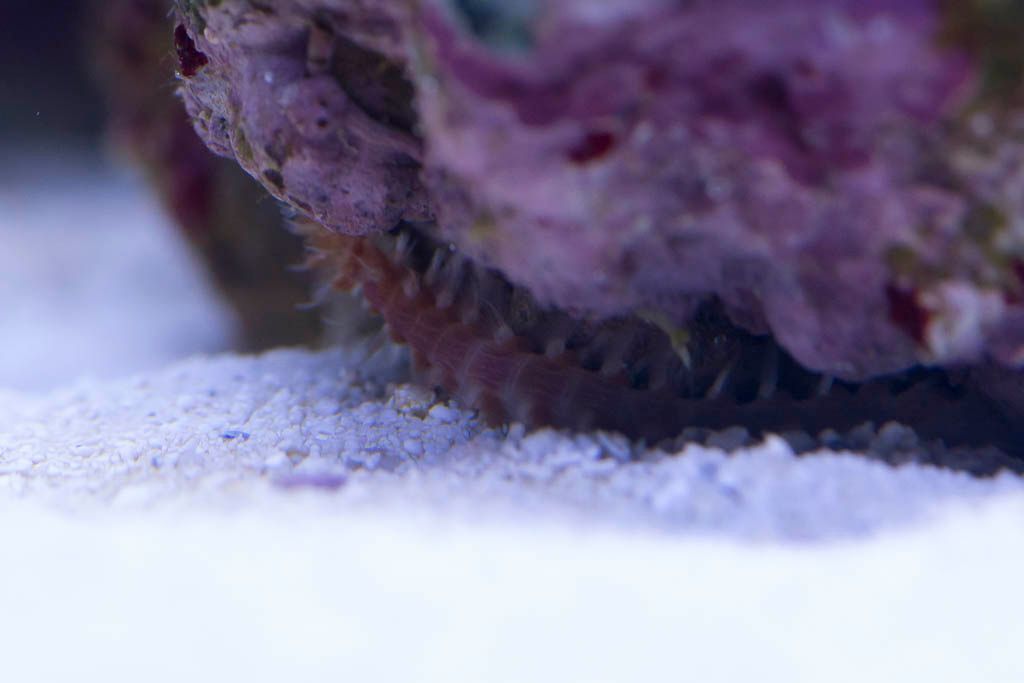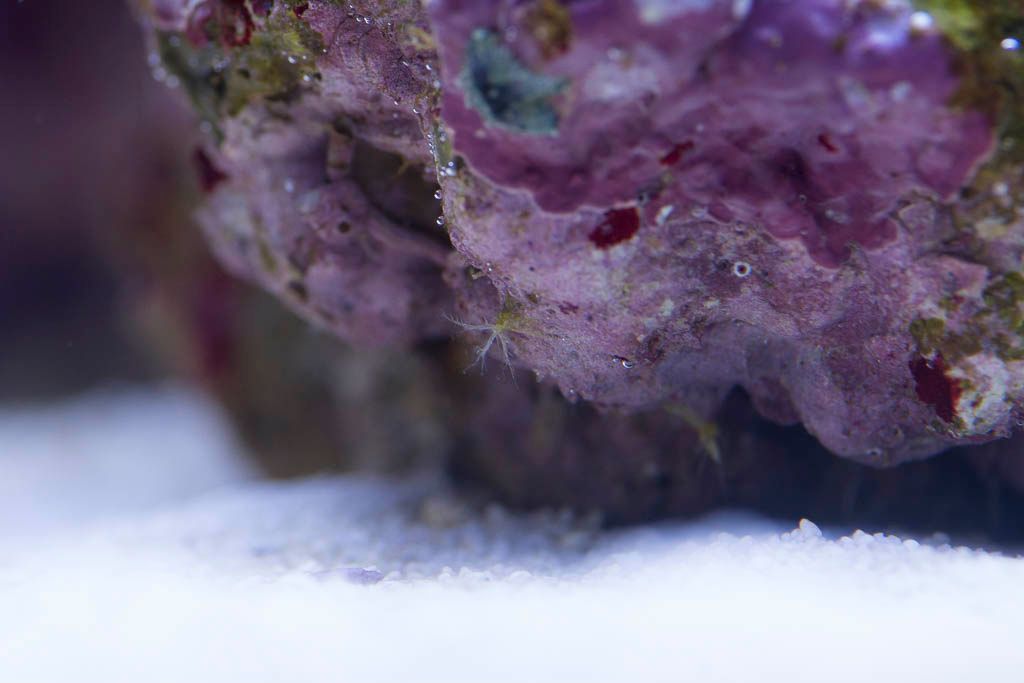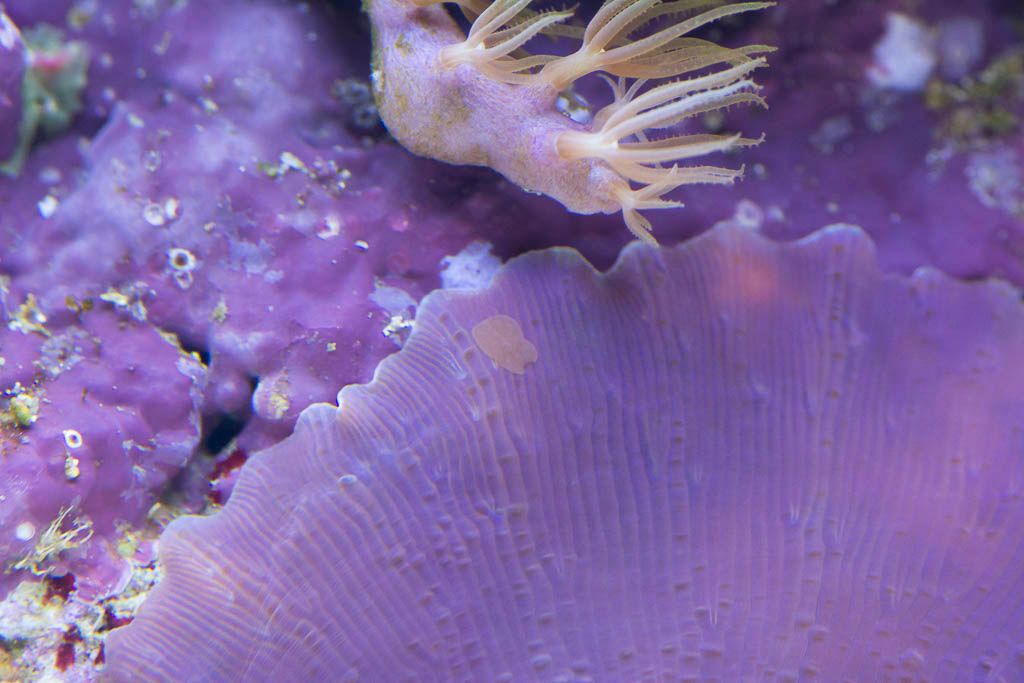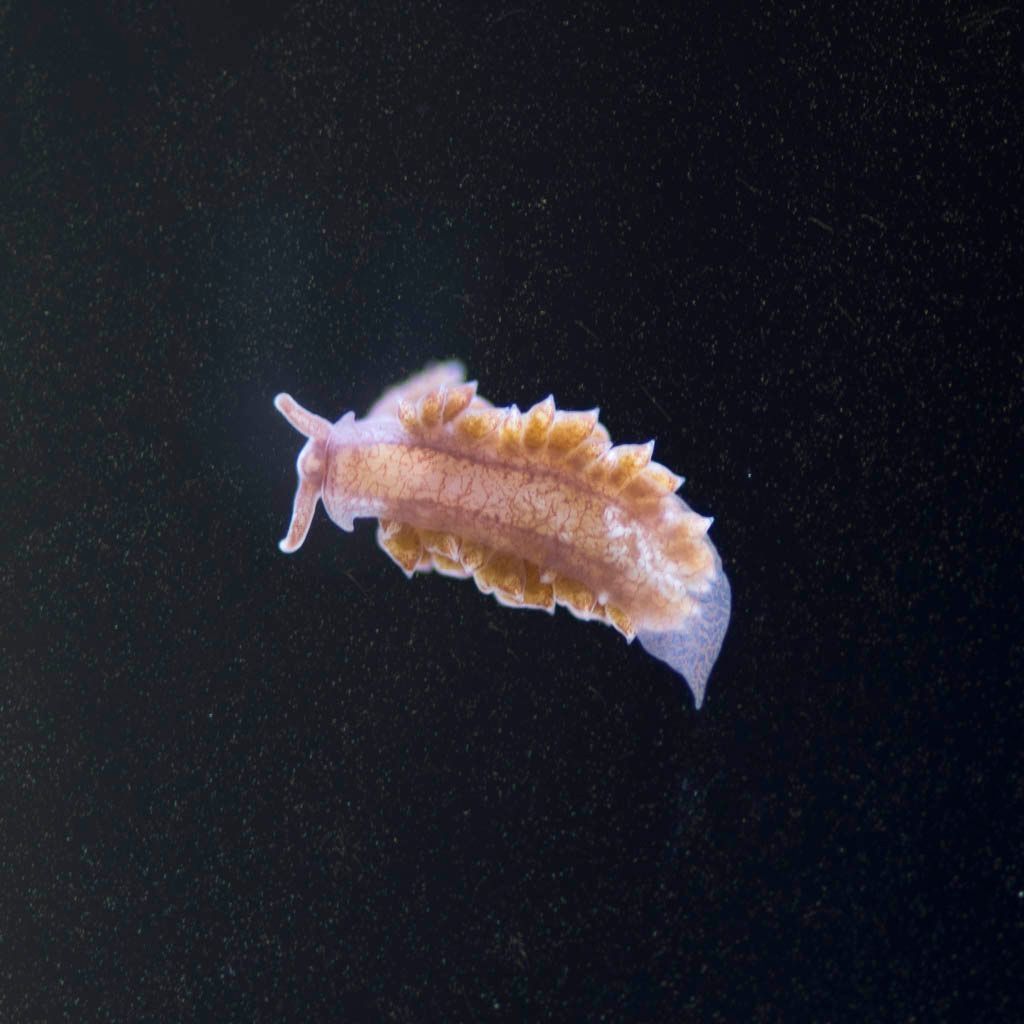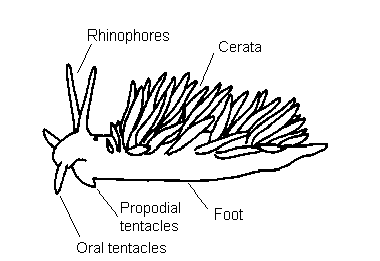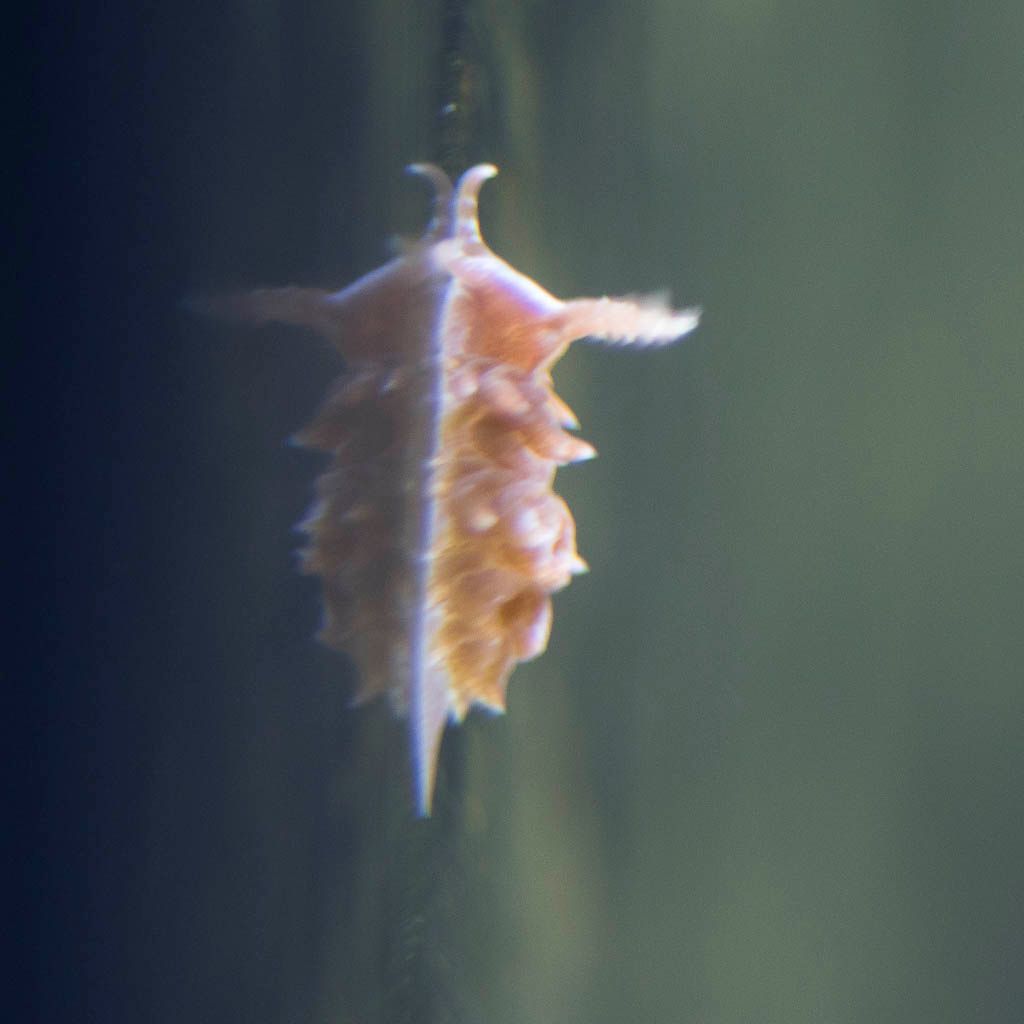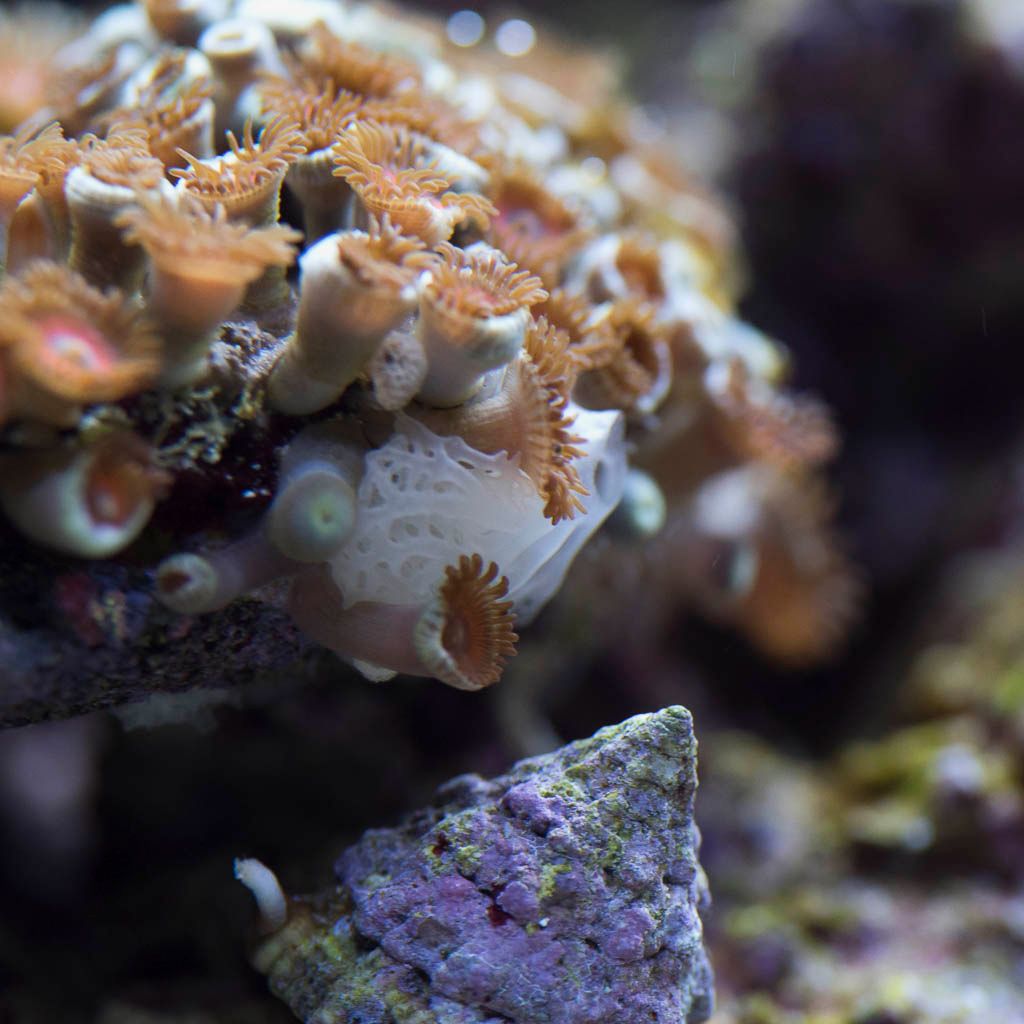Okay, I believe you have a slug from the Limapontiidae family. These sea slugs resemble nudibranchs of the Tergipedidae family (Aeolidina), but are not closely related to them. Most of the species from the Limapontiidae family are green because of the green they eat and live on.
My reasoning behind this:
Limapontiidae(s) are generally small; less than 20 mm crawling length. They usually have a slender, tapering body which may be concealed by a profusion of cerata, (your slugs body is tapering anteriorly). The anterior edge of the foot is rounded, or rarely, tentacular (your slug has this). Rhinophores long and fusiform, reduced, or absent. Rhinophores sometimes have a lateral groove at their base. (Your slug has modified rhinophores, horizontal flaps or lamellae). The cerata are fusiform, and variable in size and shape - from long and slender to short and stout - and they may be numerous to completely absent. (your slug has globular). Eyes behind rhinophores, usually in clear patches (can't see your slugs eyes in pic very well, but it does look like they are right at the base behind rhinophores).
Tergipedidae Aeolidina(s) are mostly a small species, although some may be longer than 50 mm crawling length. They have an elongate body that tapers posteriorly (yours doesn't, your slug has consistent body size/shate and does not taper posteriorly or anteriorly) and the oral tentacles and rhinophores are usually long and smooth (yours is not smooth). But, the cerata is usually tubular and arranged in single oblique rows on each side of the body, (your slug has cerata on sides in rows).
You will need to confirm all this since you've seen the slug in person. What are your thoughts on this ID? Do you concur with my comments? I'm not 100% on this slug, but close to it.
-- If you believe it from the Limapontiidae family. Then keep it, it's an algae eater.
-- If you believe it a Tergipedidae family (Aeolidina), you need to pull it out. These are carnivorous, eats hydroids (corals, etc.).
